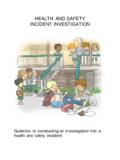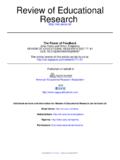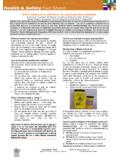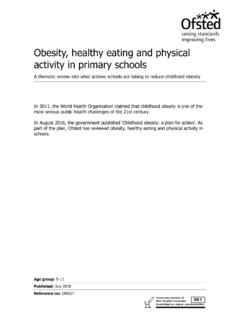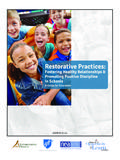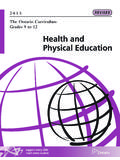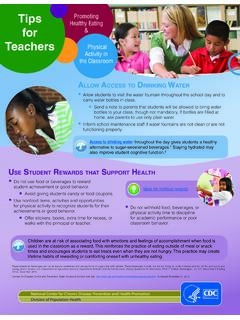Transcription of Healthy Food and Drink Supply Strategy for Queensland …
1 1smartCHOICESH ealthy Food and Drink Supply Strategy for Queensland SchoolsVersion Updated January 20202 ContentsSmart Choices 3 Background 4 The Food and Drink Categories 6 Nutrient criteria to identify Occasional foods and drinks 12 Reading nutrition information panels 14 Nutrition information and serving size 15 Resources 17 The Smart Choices Strategy was based on the NSW Department of Health and NSW Department of Education and Training Canteen Menu Planning Guide, 2004, which was part of the NSW Healthy school Canteen from the Australian Dietary Guidelines, National Health and Medical Research Council with the exception of the Australian Guide to Healthy Eating is available under the Creative Commons Attribution International licence (CC BY ) The Australian Guide to Healthy Eating , National Health and Medical Research Council is reproduced unaltered in accordance with licensing information at Commonwealth of the exception of all images, branding, the Government Coat of Arms, and any content identified as being owned by third parties, material in this publication is licensed under the Creative Commons Attribution International (CC BY ).
2 State of Queensland (Department of Education) 2005 2019. ISBN 0734 519 761 Version Updated January 20203 Smart ChoicesApproximately, a quarter of our children are overweight or obese. This is a serious issue as people who are overweight or obese carry a greater risk of a number of immediate and long-term health and psychosocial problems. Excess weight gain in children is usually a result of excess energy intake (kilojoules or calories) through eating too much food or the wrong type of food, combined with doing too little physical activity or being inactive for too much of the day. Food and drinks consumed by children also affect oral (dental) health and contribute to the high rates of tooth decay in Queensland government has identified the health of Queenslanders as a priority and has a range of strategies, programs and initiatives to encourage a Healthy lifestyle.
3 The aim is to increase the proportion of adults and children with a Healthy body Healthy Food and Drink Supply Strategy for Queensland Schools is all about offering Healthy food and Drink choices to students in Queensland food and Drink Supply includes all situations where food is supplied in the school environment tuckshops, vending machines, school excursions, school camps, fundraising, classroom rewards, school events such as celebrations and sports days, and food used in curriculum activities. The Healthy Food and Drink Supply Strategyfor Queensland Schools reflects the AustralianDietary Guidelines (2013) and The AustralianGuide to Healthy Eating. There are many potential food and Drink items that could be supplied in schools and making selections can be a challenging task.
4 The information provided in this Strategy will help to make this task Smart Choices food and Drink categories assist with selecting food and drinks to be supplied in schools. Information is provided about: the nutritional value of foods the most appropriate (and healthiest) food choices the nutrient criteria for identifying foods and drinks that need to be Smart Choices Ready Reckoner provides a guide to food and drinks commonly supplied in schools and the category they are most likely to fit role of schoolsSchools have an important role in promoting Healthy eating and physical activity to students and providing an environment that supports a Healthy lifestyle. A Healthy diet can improve behaviours critical to educational success and performance at school . Effective school -based nutrition and health interventions can also help improve academic are an important part of the school environment; they can model Healthy food and Drink choices that are tasty, interesting and affordable, and provide the means to put into practice nutrition messages taught in the Healthy Food and Drink Supply Strategy for Queensland Schools reflects the Australian Dietary Guidelines and The Australian Guide to Healthy Dietary GuidelinesThe Australian Dietary Guidelines were developed by the National Health and Medical Research Council as a useful tool to promote Healthy eating patterns.
5 They are based on the best scientific evidence available and current knowledge about what people need to grow and develop to their optimum potential. The guidelines are not listed in order of importance and should be considered together as a package rather than in isolation. The Australian Dietary GuidelinesChildren and adolescents need sufficient nutritious foods to grow and develop should be checked regularly for young activity is important for all children and a wide variety of nutritious and adolescents should be encouraged to: eat plenty of vegetables, legumes and fruits eat plenty of grain (cereal) foods, (including breads, rice, pasta and noodles), preferably wholegrain include lean meat, fish, poultry and/or alternatives include milks, yoghurt, cheese and/or alternatives.
6 Reduced fat varieties should be encouraged. choose water as a should be taken to: limit saturated fat choose foods low in salt consume only moderate amounts foods containing added , support and promote for your child s food: prepare and store it : Based on material provided by the National Health and Medical Research Council5 The Australian Guide to Healthy EatingThe Australian Guide to Healthy Eating (AGTHE) provides information about the amounts and kinds of food we need each day from the five basic food groups to obtain sufficient nutrients for good health and wellbeing and is consistent with the Australian Dietary five food groupsThe AGTHE uses a plate model, divided into different sized segments, to indicate the proportions of food from each of the five food groups that we should be eating for good health.
7 Over three-quarters of food intake should come from three major food groups the cereal group, the vegetables and legumes group, and the fruit group. Extra foodsSome foods do not fit into the five food groups because they are not essential to provide the nutrients needed. They are regarded as extra foods and include biscuits, cakes, desserts, pastries, soft drinks, high-fat snack items such as crisps, pies, pasties, sausage rolls and other takeaways, lollies and chocolates. Most of these foods are high in fat (particularly saturated fat), and/or salt and/or added sugar and for these reasons it is recommended their intake is limited. When eaten only occasionally or in small portions they can add variety to the diet without replacing the healthier foods needed each : National Health and Medical Research Council.
8 Commonwealth of Australia. Reproduced unaltered for the promotion of Healthy eating in accordance with licensing information at food and Drink categories The Smart Choices food and Drink categories assist with selecting foods and drinks to be supplied in schools. Foods and drinks have been classified into three categories according to their nutritional value: Green, Amber and Have plenty Encourage and promote these foods and drinks in the Select carefully Do not let these foods and drinks dominate choices and avoid large serving Occasional Limit the availability of these foods and drinks to no more than two occasions per and parents also eat from the school tuckshop. While their needs may be different to those of the students , it is important that adults in the school model Healthy food to the school curriculumThe school curriculum seeks to improve students understanding of good nutrition and develop the skills to make positive health decisions.
9 Learning about healthier food choices may encourage students to try new foods. Classroom activities also provide an opportunity for students to be involved in planning and promoting healthier the GREEN category7 Encourage and promote these foods and drinksFoods and drinks from the GREEN category can be marketed as tasty, less-expensive choices. Take every opportunity to include foods from this category as part of the school tuckshop menu. For example, add at least one salad vegetable to sandwiches and rolls, add salad to burgers, and serve chilled or frozen fruit pieces at foods and drinks should be encouraged and promoted to students as the best choice and included as a major part of the daily school tuckshop menu. Foods from this category of the Smart Choices food and Drink spectrum are the best choices because in general they: are excellent sources of important nutrients are low in saturated fat and/or added sugar and/or salt help to avoid an intake of excess energy (kilojoules).
10 Foods and drinks in this category are based on the five food groups and The Australian Dietary Guidelines. Included are bread, cereals, rice, pasta, noodles, vegetables, fruit, reduced- fat milk, yoghurt, cheese, lean meat, fish, poultry, eggs, nuts and legumes. Providing a range of Healthy food choices is important for variety. The best Drink in this category is plain this category even healthier choices can be made. Wholegrain breads and cereal products are healthier because they incorporate all of the natural grain and are higher in fibre. For example: air-popped popcorn, high-fibre breakfast cereals, wholemeal, rye and high-fibre breads and crispbreads. Fruits that are eaten with the skin on are also higher in fibre. Have plenty the GREEN category8 Presentation is an important factor in selection.





